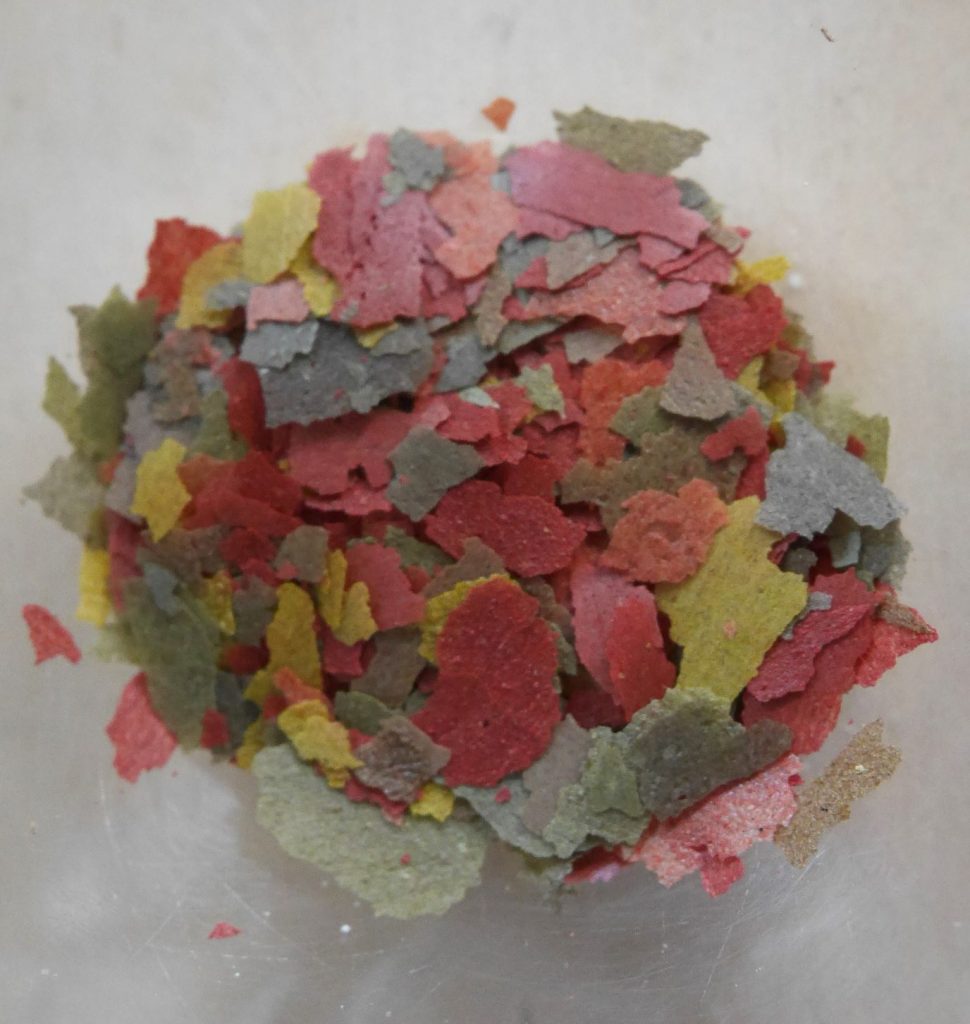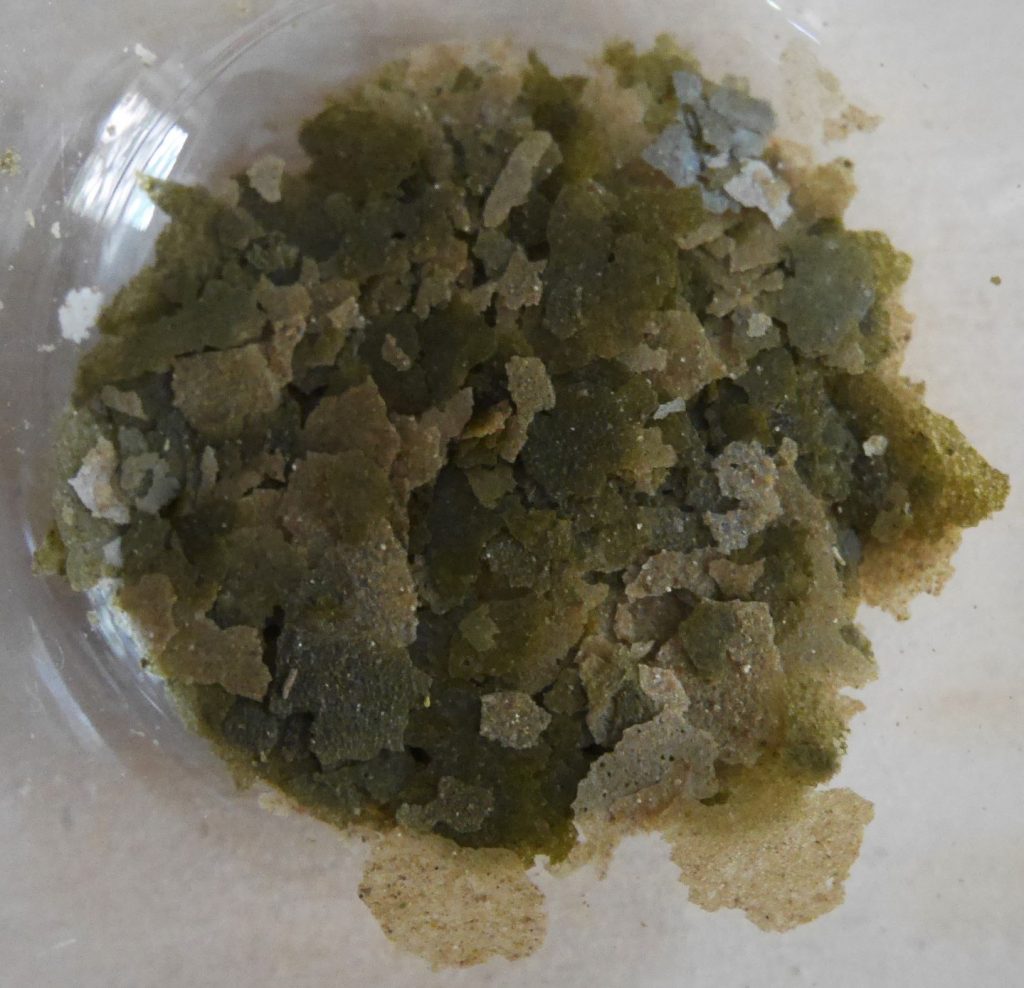I bought new fish food the other day. It is not as colourful as the old one and I smell a little more herbaceous notes, a little more freshness. But I am even not sure if I could distinguish both in a blind test. I will try that later. First impression: the fish spit out the flakes less often.

old food flakes 
new food flakes
“More than half of facilities fed their D. rerio three times per day (37 of 67) and most of the remaining facilities were using a two-meal per day strategy (29 of 67). Only five (of 67) respondents used automated feeding and nobody reported using demand feeder techniques, as used in aquaculture. Many facilities used live food daily (47 of 67), but there was a range of extremes with six (of 67) facilities always using live food and two (of 67) who never used it. Live cultures were routinely brine shrimp Artemia sp. (58 of 66) and rotifer Brachionus sp. (20 of 66). Danio rerio were routinely fed laboratory-specific dry food (49 of 67), hobbyist branded dry food (14 of 67) and frozen food (nine of 67).”
Lidster, K. International survey on the use and welfare of zebrafish Danio rerio in research. Journal of Fish Biology (2017) 90, p 1895:
Zusammensetzung/ingredients (according to the manufacterer): Fischmehl, Weizenmehl, Brauereihefe, Ca-Caseinat, Hermetia (4 %), Gammarus, Spirulina, Volleipulver, Seealgen, Mannan-Oligosaccharide, Lebertran (davon 34 % Omega-Fettsäuren), Kräuter, Luzerne, Brennessel, Petersilie, Paprika, Grünlippmuschel, Spinat, Karotten, Heamatoccoccus-Algen, Knoblauch.
Analytische Bestandteile/analytical constituents: Rohprotein 48,8 %, Rohfett 8,0 %, Rohfaser 2,9 %, Feuchtigkeit, 5,0%, Rohassche 10,7 %.
Zusatzstoffe/additives: Vitamine und Provitamine: Vit. A 37.000 IU/kg, Vit. D2 1.800 IU/kg, Vit.E (D, L-α-tocopheryl-acetat 120 mg/kg, Vit. B135 mg/kg, Vit B2 90 mg/kg, stab. Vit. C (L-ascorbyl-monophosphate) 550 mg/kg.
